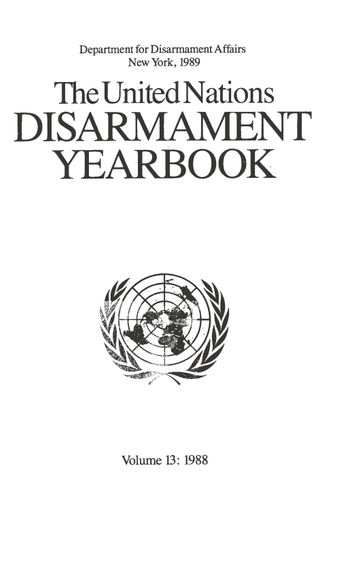Conventional weapons

- Author: United Nations Office for Disarmament Affairs
- Main Title: United Nations Disarmament Yearbook 1988 , pp 323-343
- Publication Date: December 1988
- DOI: https://doi.org/10.18356/858142f7-en
- Language: English
The issue of the reduction of conventional armaments and armed forces was first addressed by the General Assembly in the course of its earliest sessions, yet the question of nuclear disarmament has traditionally dominated international disarmament efforts, inasmuch as it is nuclear weapons that pose the threat of the annihilation of civilization. All armed conflicts since 1945— almost all of them in developing countries—have been fought with conventional weapons and they have caused over 20 million deaths. Conventional weapons and armed forces account for some four fifths of global military expenditures. (This proportion is almost the same in the nuclear-weapon States.) Moreover, in the course of the past two decades there has been a steady increase in the accuracy and destructive potential of conventional weapons, owing to modem technological advances, and, more recently, sophisticated—and costly—conventional weapons have been transferred into the arsenals of countries in developing regions. Some developing countries are also building their own armaments industries, and even exporting weapons at the simpler end of the technology spectrum to other developing countries.
© United Nations
ISBN (PDF):
9789210579926
Book DOI:
https://doi.org/10.18356/274fb369-en
Related Subject(s):
Disarmament
Sustainable Development Goals:
-
From This Site
/content/books/9789210579926s005-c001dcterms_title,dcterms_subject,pub_keyword-contentType:Journal -contentType:Contributor -contentType:Concept -contentType:Institution105
/content/books/9789210579926s005-c001
dcterms_title,dcterms_subject,pub_keyword
-contentType:Journal -contentType:Contributor -contentType:Concept -contentType:Institution
10
5

